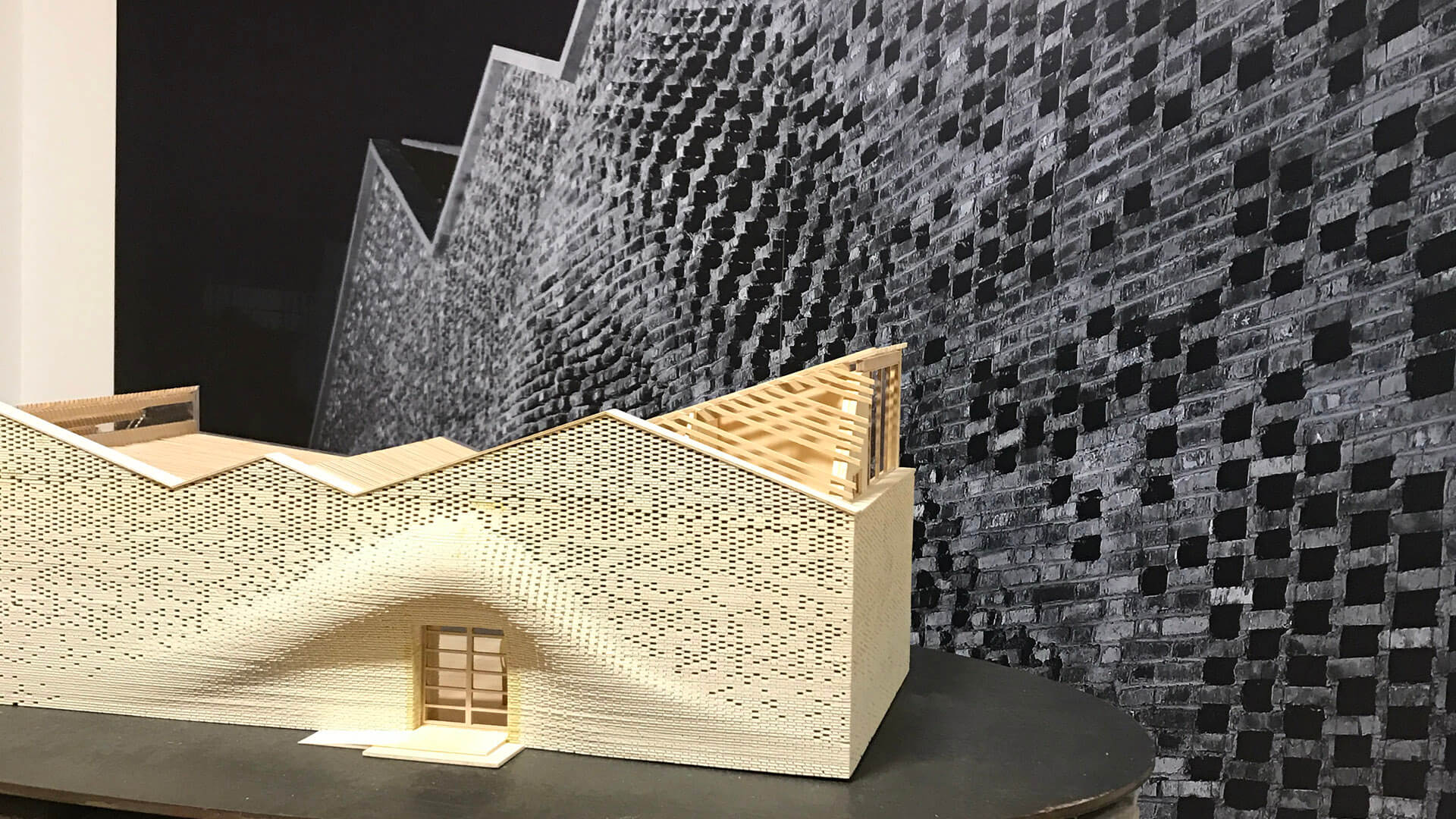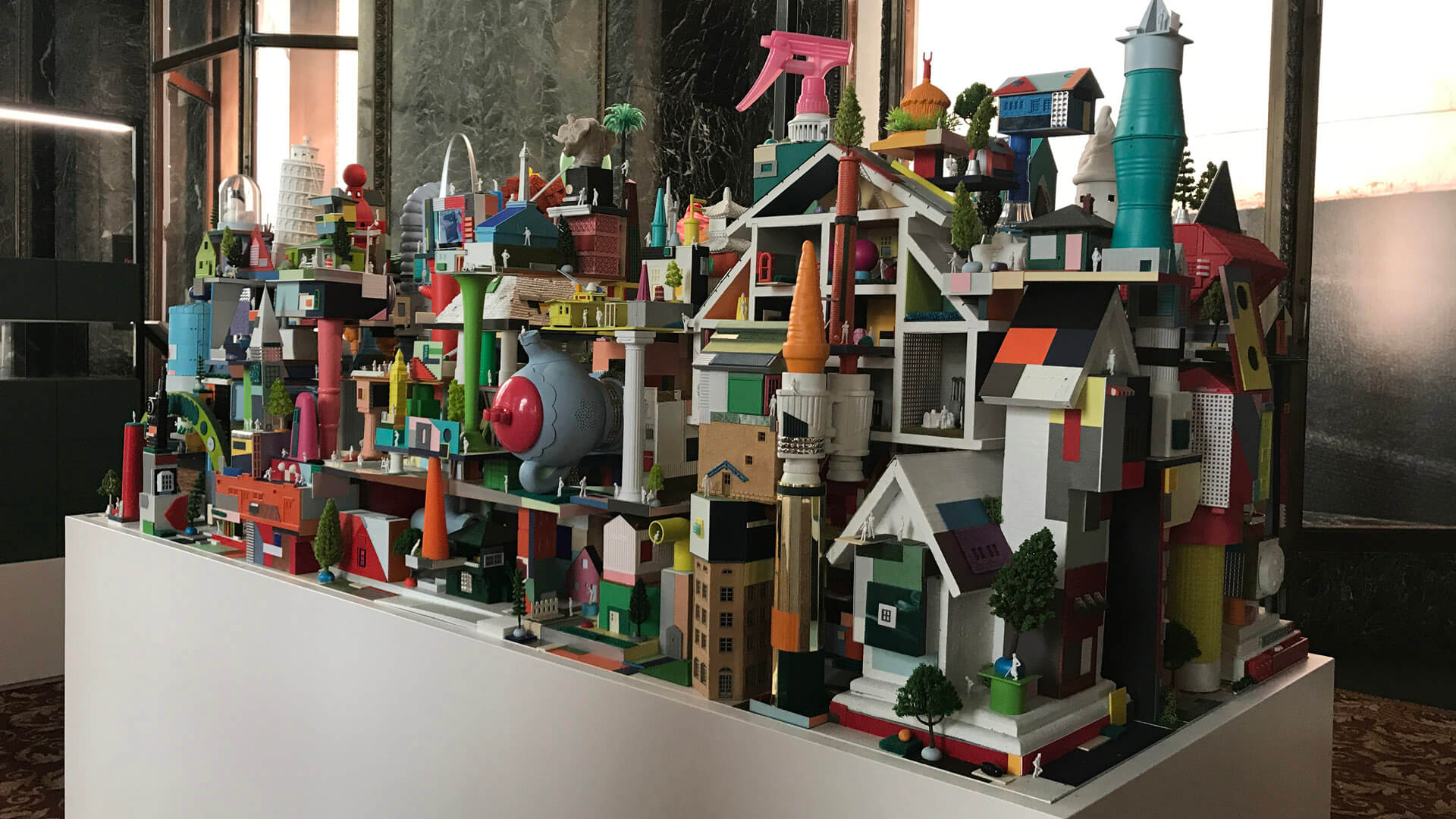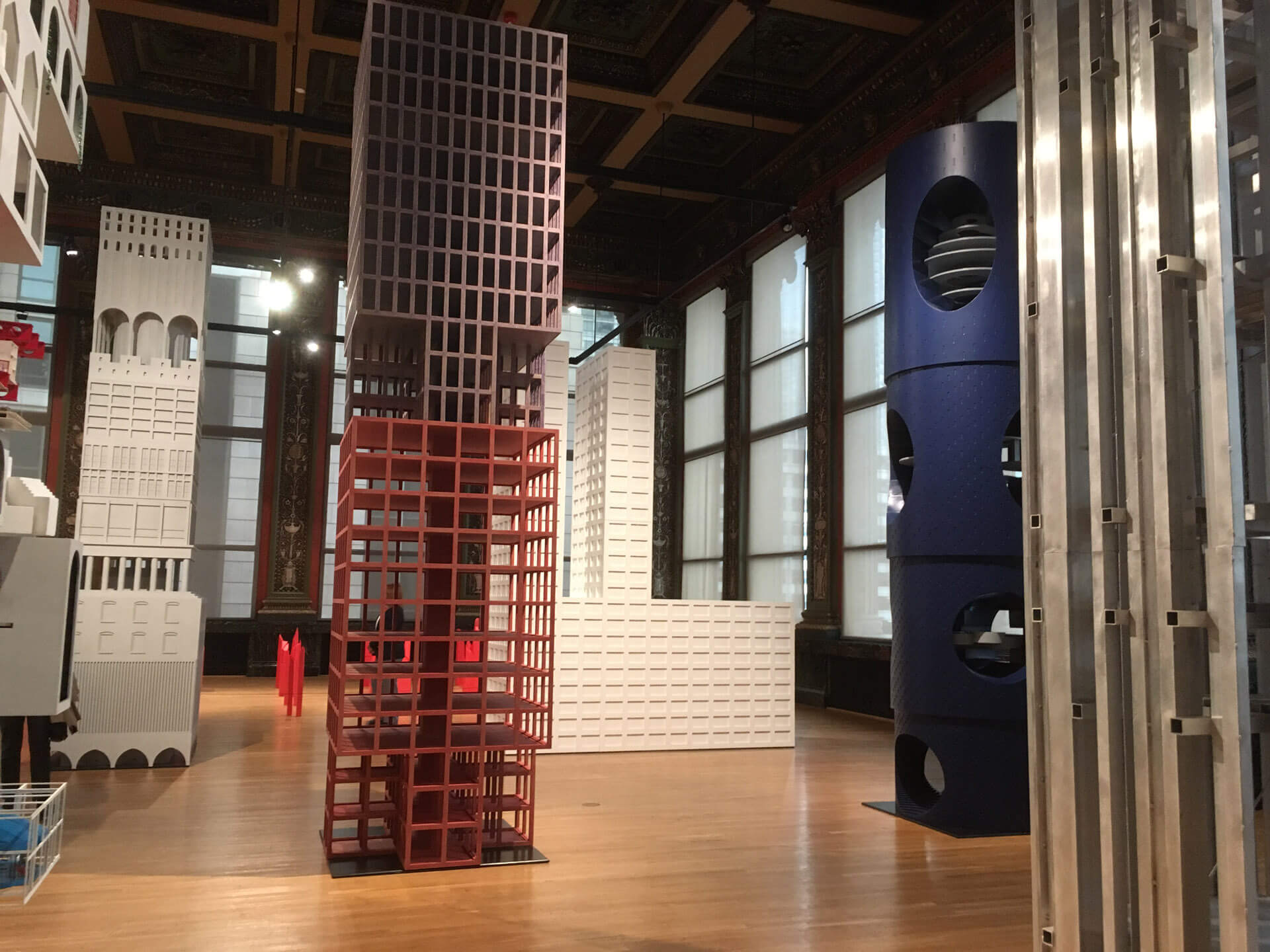Sometimes city building seems to be more a response to the past than a bid for a preferred future. That’s discouraging to those of us who would like to see more political intention and design imagination at work in making and remaking our cities. Chicago seems different. It’s known as a testing ground for historic ideas that have shaped the development of other cities, especially in the West. Now it’s demonstrating international leadership in design culture with the second edition of the Chicago Architecture Biennial.
Billed as the largest architecture and design exhibition in North America, it’s a window on design thinking and place making around the world. Under the theme Make New History, artistic directors Sharon Johnston and Mark Lee selected works from over 140 architects and artists in more than 20 countries for display.
Material research
From China, there are signs of a return to traditional materials and building methods, used in imaginative new ways and made possible by robots. It’s an unexpected affirmation of building. Examples by Archi-Union demonstrate a brand new tradition of craft using the elements of wood joinery, ceramics, and masonry. There are models and photographs of expressive structures combining solid and durable shelter with intricate patterns and deeply dimensioned surfaces. In one example, robotic bricklayers have produced a programmable, undulating façade for an old building. In another example, roof tiles are deployed in an inwardly overlapping ring shape supported by a light, prefabricated steel frame.
Reuse
What is the future for big box structures in office parks or retail malls in the era of reurbanization and online shopping? There are some answers in Ghostbox, an exhibition mounted by T+E+A+M, from Michigan. It’s an intricate scale model, showing what appears to be a gradual process of scavenging and deconstruction in and around an old Packard Plant in Detroit. The result is a park-like, darkly romanticized landscape that calls to mind a Roman ruin. There are haunting traces of stamped out cornices and signage that remind us of the recent past, but in the words of the Ghostbox makers these can be seen now to “destabilize the relationship between physical materials and their representation,” and perpetuate “the crisis of time imbedded in ruins.”
Informal Development
From LA, Andrew Kovacs presented Proposal for Collective Living II, which appears as a vertiginous, favela-like stack of buildings, roadways, and vehicles. He explicitly explores the act of making architecture from architecture. It’s one of his series of installations playing on ad-hoc construction through mash ups of models, toys, and stray objects. A lecturer at UCLA Architecture and Urban Design, Kovacs has declared that he is devoted to the collection and display of “architectural b sides.” Proposal for Collective Living II gets a lot of visitor traffic at the Biannual, and sends a humbling message to the urbanists and design professionals among us: people cannot always wait for planning, visionary design and legal process. It’s also a reminder that real, “authentic” places rarely spring from one mind in any one time.
Branded Objects
Perhaps the most remarked and retweeted exhibit of the Biennale is the international collection of tall building models in a grandest space at the Chicago Cultural Center. The only rule with this installation seems to be that entries are built in roughly in the height-to-footprint proportion of a skyscraper, with multiple stories. You might ask if they were made to some scale, but as you enter the exhibit it becomes quickly apparent that scale has little to do with it. These miniature buildings might fall into the category of speculative architecture, but they are truly just objects—not even models. Some invite imagination about how they might be inhabited, but many seem perfectly complete without that layer of reality.
The main exhibition at the historic Chicago Cultural Center is free and open to the public through January 7, 2018.


